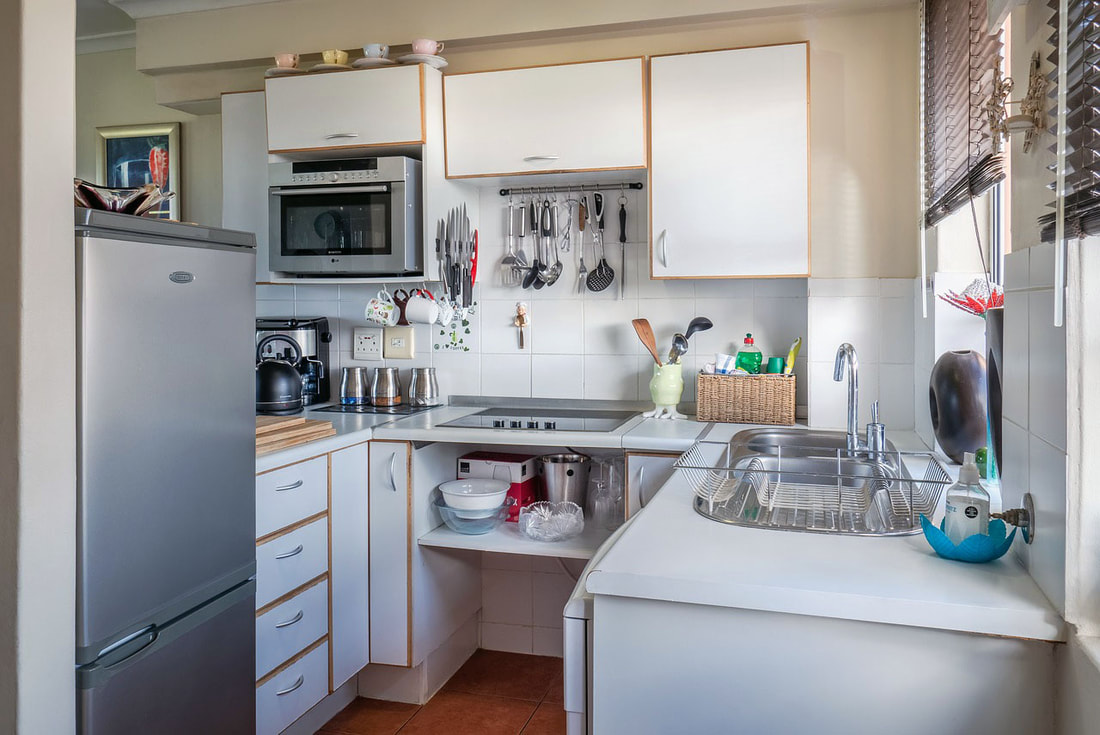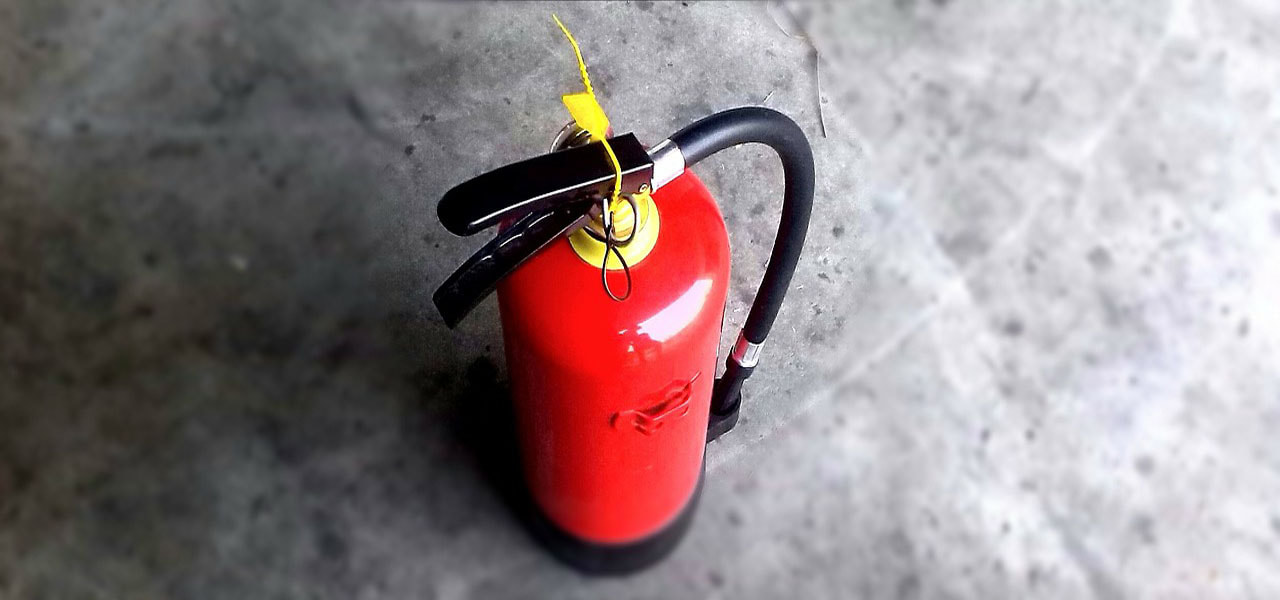|
By Anna Hazard
Introduction
To finish up the section on aging in place & universal design for the kitchen, here are a selection of small items, aids, and ableware that will make using the kitchen more easy & accessible. The focus here is on items that will be particularly useful when it comes to using the kitchen for eating, meal preparation, and clean-up while having a variety of health conditions that are common with aging (such as arthritis, hand tremors, limb weakness etc).
As these kitchen ware are generally smaller & less expensive to obtain than appliances or other modifications done in advance, they can more easily be bought as needed from a variety of stores that specialize in daily living & adaptive aids (as well as certain styles & brands being more widely available). Kitchen Safety Items
Other miscellaneous items & options that should be kept in mind while preparing a kitchen for accessibility and properly aging in place include making certain that safety gear is present & easily within reach inside the room. This would include installing a smoke & carbon monoxide detector within the area. While optimally there should be several smoke detectors spread throughout the household, one within the kitchen itself is necessary due to the prevalence of possible cooking fires.
In addition, easy-use fire extinguishers should be kept nearby (with their directions read in advance so that the user would already know how to activate them in case of an emergency) as well as flame snuffers made of fire resistant fabric and material can be an easier way of smothering the grease fires commonly found within the kitchen that can not be put out using normal water. Other safety based devices include having several full sized oven mitts readily available that will cover all exposed skin on the fingers, hands, and lower arms when it comes to handling heated dishware. Due to the prevalence of accidents within this particular location, it's also recommended to have portable or smart technology-abled medical alert devices or low lying intercoms & phones that can be reached from the floor. Food Preparation
Other beneficial kitchen devices include items helpful during the various stages of food preparation. In particular, one handed options tend to be easier to use for those with weaker hand strength & dexterity due to arthritis or other health conditions.
Some examples of such food prep tools include one handed vegetable brushes and peelers (usually in a countertop or clamped-to-counter-edge style), one handed chopping, cutting, & paring boards, easy grip graters, peelers, & mincers, as well as angled measuring cups (that don't need to be tilted to an uncomfortable degree in order to pour out their contents). As well as being easier to use, these kitchen items tend to have an additional safety benefit. This includes rocking, helper, or arthritis knives (safer and easier to handle than standard knives and thus suitable for chopping with weakened hands) and pot stabilizers that are ideal for those with limited arm strength by preventing pots & pans from tipping over as well as helping with one handed cooking. Cut resistant gloves are beneficial to all kitchen users who use sharp implements but especially for those who may have hand tremors while long heat resistant gloves that cover the fingers, hands, and exposed skin on the arms are a necessity when it comes to handling heated items from the stove or oven. Over stove mirrors can also be a beneficial addition as they help the user monitor the contents of pots without having to come closer and bend over a heated stove. A few other handy aids that can be stocked in the kitchen for help with preparing food include universal jar & bottle openers which can come in a variety of styles from soft & inexpensive handheld grippers, to all-purpose hand openers & gripping tools (similar in appearance & use to easy hold pliers or knob turners), to countertop, wall, or counter mounted openers. In general, cabinetry mounted openers (such as those installed under the counter) are usually the easiest for one handed access with limited hand strength required. As more prescription medicine tends to be needed for various chronic conditions as one ages, it would also be best to have on hand an assortment of pill bottle openers, pill cutters, or pill crushers (the mortar & pestle style usually being the easiest to handle for the widest range of people). Other opening aids that may come in handy include ring can pullers or one touch automatic can openers as well as bag openers (suitable for pulling open food bags such as potato chips & cookies), safety bag cutters (for slitting open packaging instead), and wrap cutters. In addition to these food prep items, other hand aids such as milk, juice, and soda jug holders, caddies, tippers, and pouring aids can be situated within the refrigerator or other shelving when it comes to having to handle heavier containers of liquids. Miscellaneous
Besides installing pull down & pull out cabinetry for easier access to shelving & drawers, the use of dependable long reach grippers is recommended instead of step stools in order to help prevent falling accidents.
If step stools are to be used, then it's best if they are installed as pull-out wall attachments to the counters & cabinetry. This will greatly reduce their potential for skidding or moving away when being used while still allowing them to be folded up against the sides or walls (thus not posing a further tripping hazard). In the case of portable step stools, they should have handrests/handrails, good traction, and be of a durable material and good weight so that they will not be prone to moving while being used. Otherwise for further aging in place and accessibility benefits, ergonomic & universal knob and handle turners, door grippers, and grip twisters can be installed along the various harder to hold handles, spigots, and knobs found within the various appliances and cabinetry of the kitchen. View the Rest of the Series
Part 1 - Introduction
Part 2 - Exterior Part 3 - Landscaping & Gardens Part 4 - Patio, Porch, & Deck Part 5 - Garage & Carports Part 6 - Entrances, Exits, & Thresholds Part 7 - Exterior Steps & Ramps Part 8 - Threshold Lighting & Windows Part 9 - Interior Doors & Halls Part 10 - Interior Steps & Staircases Part 11 - Interior Stairlifts Part 12 - Interior Elevators Part 13 - Interior Lighting Part 14 - General Interior Flooring Part 15 - Interior Flooring Comparisons Part 16 - HVAC & Energy Efficiency Part 17 - Power, Communications, & Other Interior Systems Part 18 - Living Room Part 19 - Kitchen Layout, HVAC, & Electrical Systems Part 20 - Kitchen Lighting, Flooring, and Sink Faucets Part 21 - Kitchen Countertops & Cabinets Part 22 - Kitchen Refrigerators, Freezers, and Dishwashers Part 23 - Kitchen Ovens, Ranges, Stovetops, and Cooktops Part 24 - Kitchen Microwaves, Blenders, & Food Processors Part 25 - Miscellaneous Kitchen Items Part 26 - Dining Room Layout, Tables, & Other Furniture Part 27 - Dining Room Flooring, Lighting, & Meal Serving Equipment Part 28 - Bedroom Layout & Closets Part 29 - Accessible Beds Part 30 - Bedroom Furniture, Electronics, & Other Accessories Part 31 - Bedroom Flooring Part 32 - Bedroom Lighting Part 32 - Bathroom Part 33 - Laundry Room
0 Comments
Leave a Reply. |
AboutNews updates, tips, and guides on senior care, senior health, stress relief and a host of other caregiving related topics from the professionals at Ella Stewart Care. |






 RSS Feed
RSS Feed
